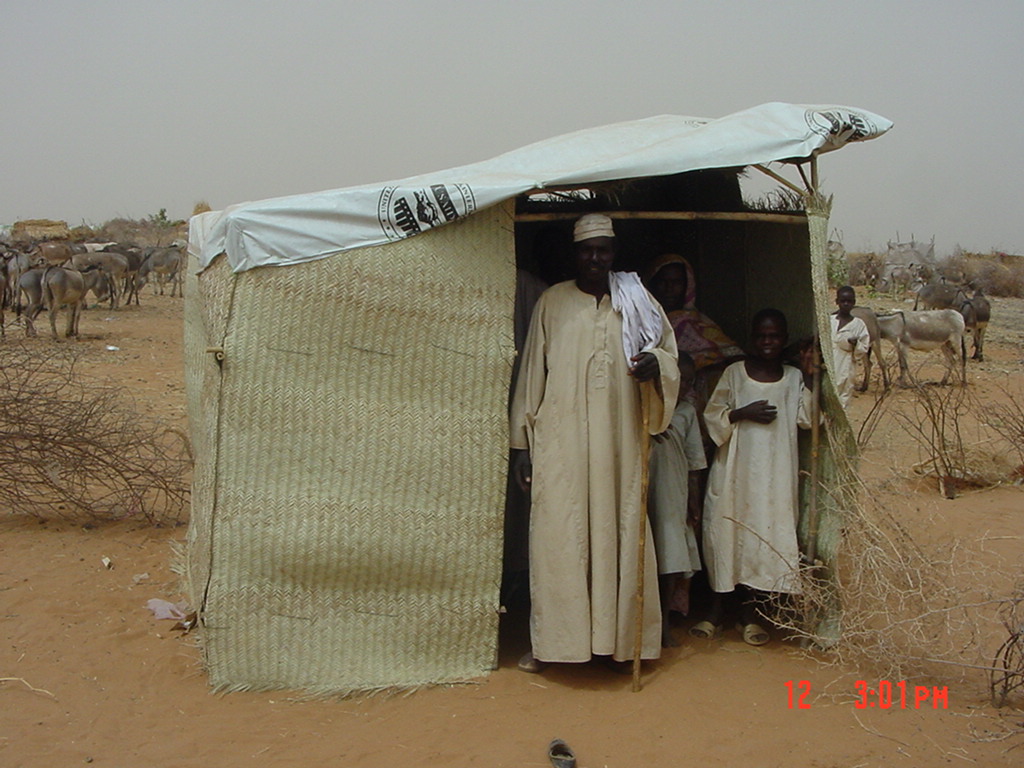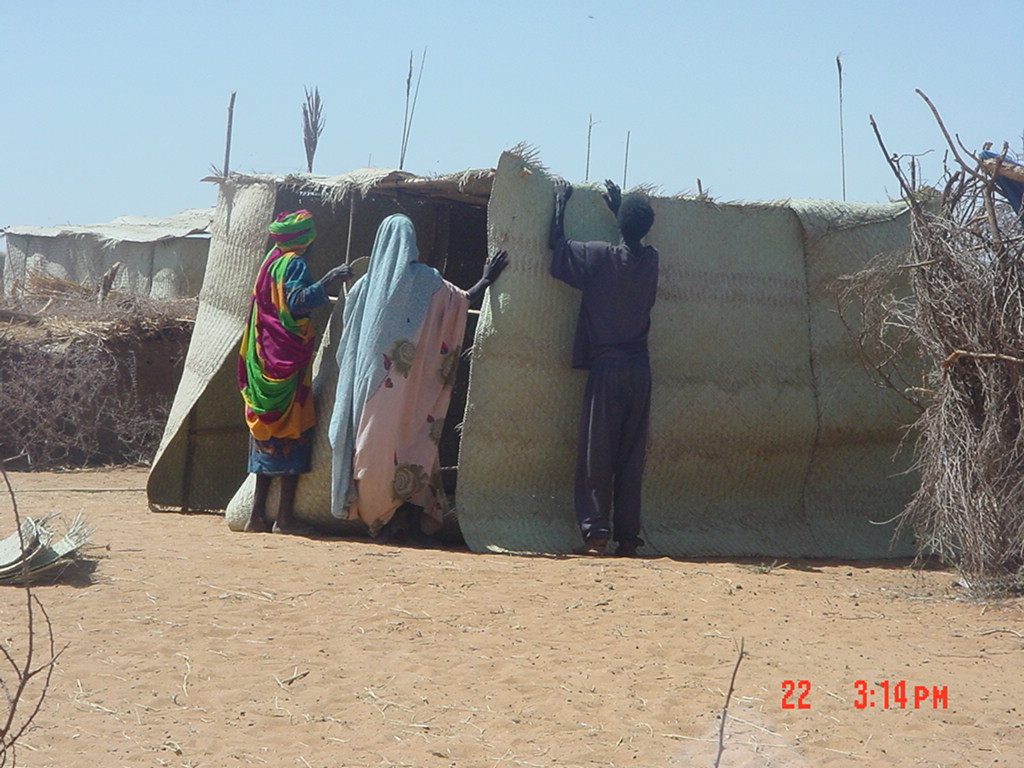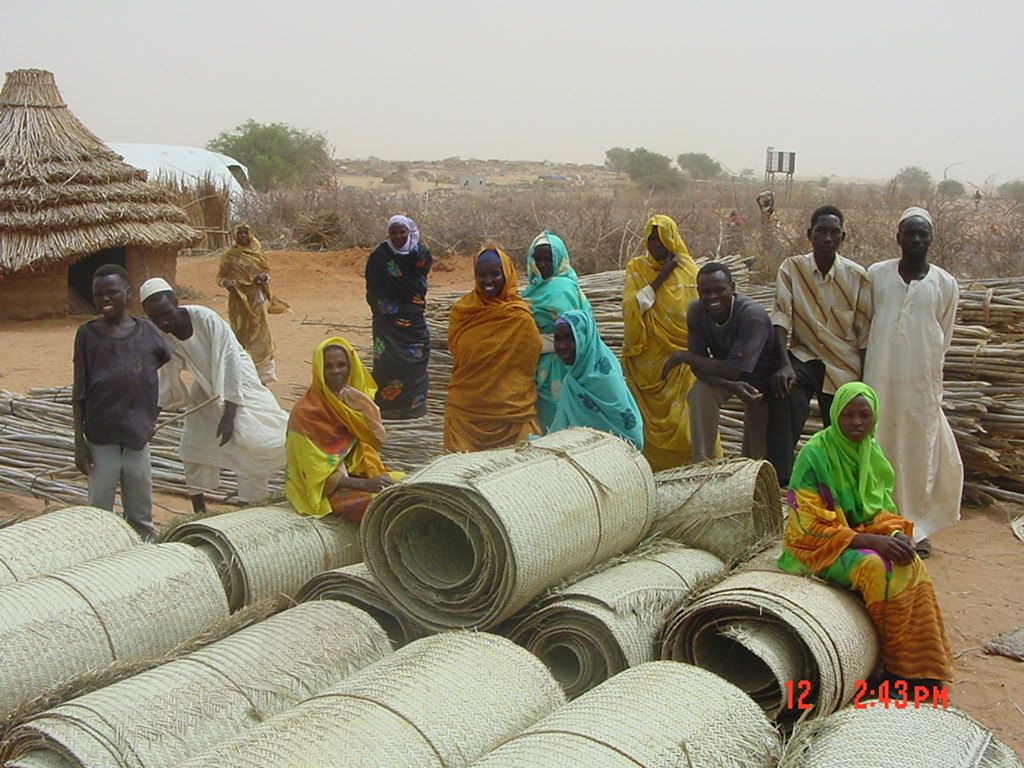
A family inside their transitional shelter, built with woven mats and styled after a traditional rakuba. Isaac Boyd
| Location | Darfur Province, Sudan |
| Date | 2004–5 |
| Organization | CHF International |
| End Client | Displaced populations in Darfur |
| Design Team | Scott Mulrooney, Isaac Boyd |
| Additional Consultant | Richard Hill |
| Major Funding | USAID Office of Foreign Disaster Assistance |
| Cost per unit | $90 |
| Occupancy | 4–5 people |
| Area | 67 sq. ft./6.25 sq. m |
One of the difficulties relief organizations often encounter working in areas of conflict is finding a balance between a host community’s desire to prevent refugee camps from becoming permanent communities and the needs of refugees for income generation and community building.
BOLD (Building Opportunities and Livelihoods in Darfur), a temporary housing initiative launched in 2004 by CHF International for families displaced by civil war in western Sudan, is one of those rare projects that succeeds in striking a balance between the two.


Women and men hang woven mats from a frame to make a shelter. Isaac Boyd
At the time many people in the camps were living in shelters cobbled together from cardboard and plastic sheeting. “The tents were difficult to get in and out of, dark, and poorly ventilated. It just wasn’t a great solution,” explains Elin Grimes, a project coordinator. What’s more, the plastic sheeting used to construct them, while waterproof, degraded and tore quickly under North Africa’s extreme heat. At the same time government restrictions on permanent shelters prevented agencies from working with the displaced population to build more permanent housing. Furthermore, a lack of work and food in the camps meant that women were traveling outside the camps in search of fuel wood, potentially exposing themselves to physical or sexual attack.
In an effort to provide a source of income generation and improve the makeshift housing of the camps, CHF launched BOLD in 2004. The program employed camp dwellers surrounding the town of Nyala in South Darfur, where grass was plentiful, to weave mats. Those mats were provided to displaced persons in camps in North Darfur, where grass was scarcer, to create temporary shelters modeled on traditional rakubas. Constructed from bamboo frames, the shelters were lashed together by cord recycled from rubber tires. The program employed some 3,000 people, 85 percent of them women. Each weaver produced one to two mats a day, providing them with an income of 250–500 Sudanese dinars ($1–2) per day, enough to buy chickens and eggs and add an important source of protein to their diets.
The shelters are not intended to be permanent. A strong rainstorm caused some to be damaged and repaired. Still, they offered an improvement on the existing shelter. Perhaps more important, by generating income for the weavers, they helped to improve camp life in other ways. “They are a step up,” said Grimes of the design. “Everyone would like to see these people living in better homes, but trying to balance what you can do financially, what’s immediately available, and what the government will allow you to do doesn’t give you a whole lot of flexibility.” CHF has since used the same mat-weaving, income-generation program to build community centers in other camps.

The mats were woven in the south, where grass is plentiful, and were used locally as well as transported to the arid regions in the north, where grass does not grow. Isaac Boyd















READ OR LEAVE A COMMENT